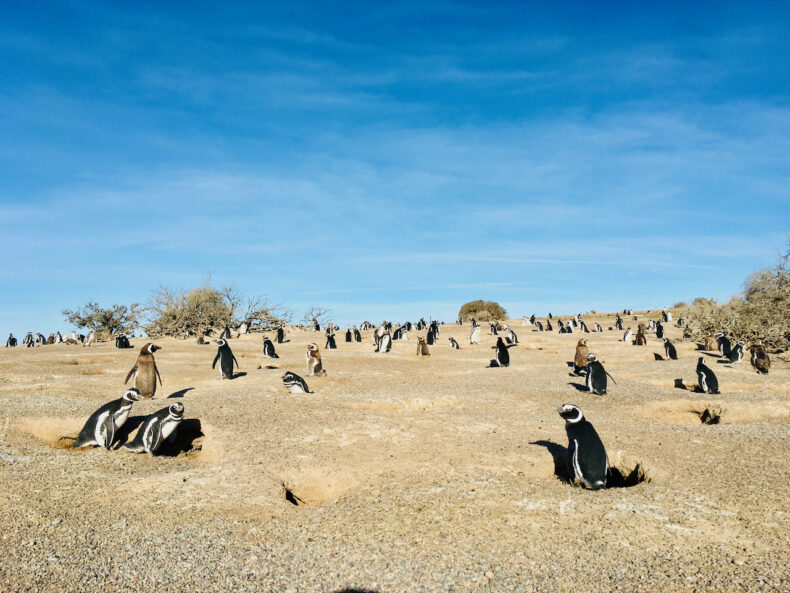
Brown
Penguins are black and white—everyone knows this—except when they aren’t, like in April, at a place called Punta Tombo. Punta Tombo is a gnarled peninsula in southern Argentina that hosts a large colony of Magellanic penguins. Every September, more than two hundred thousand of them come here to breed. They pair up, lay a clutch of two eggs, incubate those eggs, have a brood of two chicks, feed those chicks, and, finally, watch those chicks strike off on their own. The luckiest penguins go through all those steps over the course of several months. The vast majority of penguins are not that lucky, however. Some never find a mate, or a kelp gull eats their eggs, or their chicks starve, and so on. Sometimes I am astonished at all the ways they can be unlucky. Even so, no matter the outcome of the breeding season, once March and April arrive, every single penguin molts.
The molt seems to me a harsh way to close the year. Some birds only molt a few feathers at a time so they can keep living their lives more or less unaffected by the need for new plumage. Not so Magellanic penguins. Magellanic penguins undergo what is called a catastrophic molt, which means they replace all their feathers at the same time. To prepare for this involved procedure, they first leave the colony for two or three weeks to stuff themselves with food. When they return, they settle in a nest, or sometimes just a patch of open ground, and stop preening and oiling their feathers. Deprived of care and oil, the feathers soon lose their lustrous blackness, fading to brown. The colony fills with brown penguins.
This is the first stage of the molt. Because we are creative, we call it Brown. Think of it as the beginning of the end.
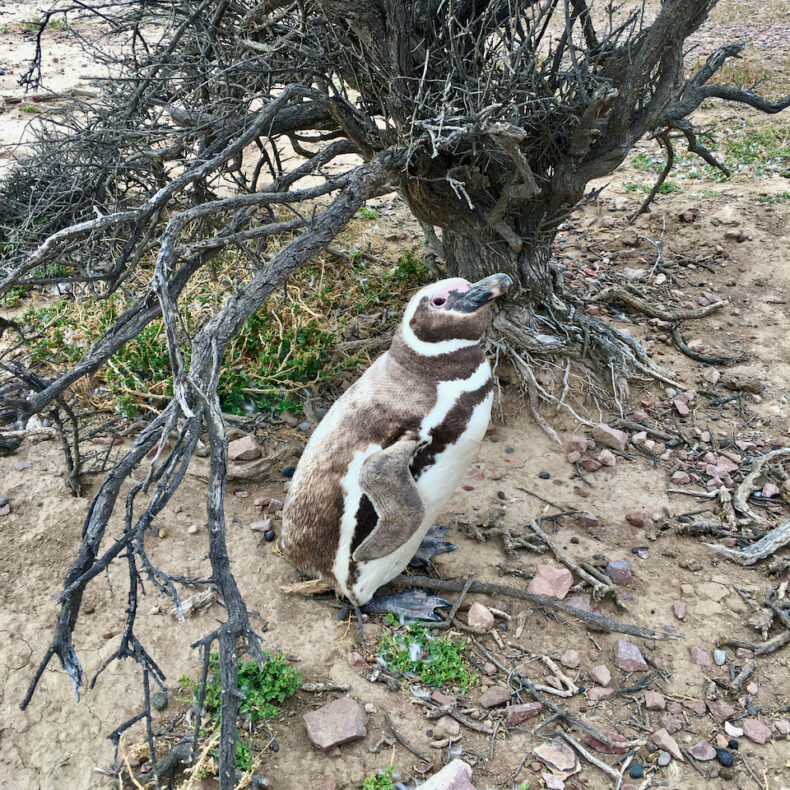
Slightly Swollen
After Brown comes Slightly Swollen. This stage is usually quick. Already enormous from having eaten so much, the penguins begin to inflate even more, superficially at least, as their new feathers start to grow by the tens of thousands, causing their old plumage to fluff out. This stage also marks the last time for a while that a bird’s appearance approximates that of a conventional penguin.
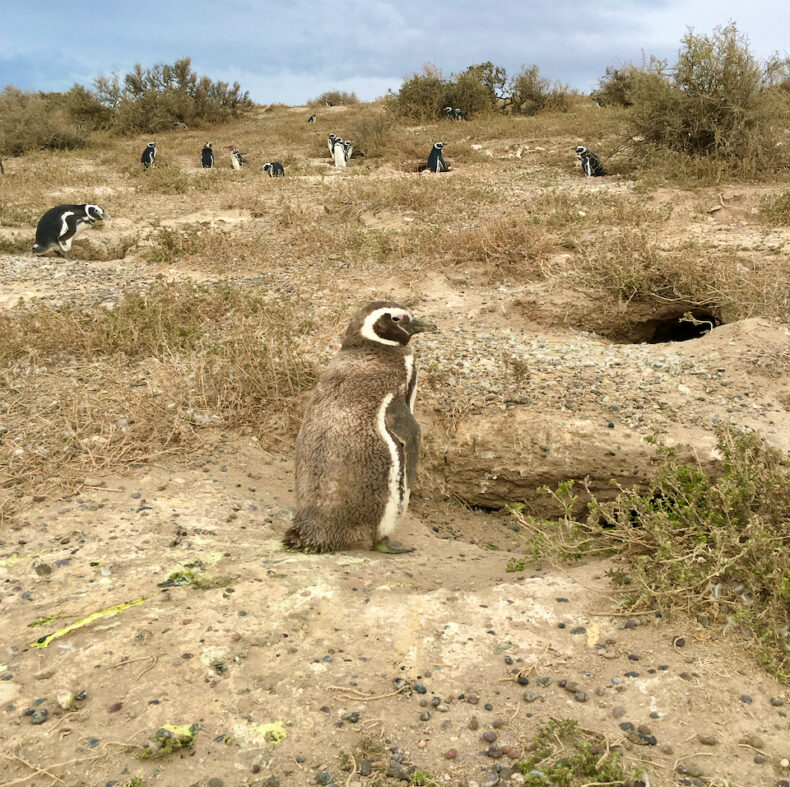
Feathers Erect
From Slightly Swollen, the penguins move to Feathers Erect. Their new feathers are starting to push out of the follicles. The old plumage stands at attention, or so it seems, in a sort of passing of the guard. The penguins’ bodies become even more swollen, not only from their floofed-out feathers, but also from an increased flow of blood through their skin. Their flippers, which the rest of the year are sleek strong blades, now look like floppy soft paddles. They are also quite fragile, in a sense. If a penguin brushes too hard against one of dry sticks common at Punta Tombo, their skin breaks and they are liable to bleed all over the place. (Thankfully these wounds are superficial.)
Identities blur during Feathers Erect. Females and males become almost impossible to tell apart. The basic rule that we can reliably follow at all other times of the breeding season is that males are bigger than females: bigger bills, bigger heads, bigger feet, longer flippers. The molt softens these distinctions. I realize how much I have relied on certain subtle cues: not only the size of the bill, but also its relation to the shape of the head, all of which can depend on a crisp arrangement of feathers. Now females and males just look like overstuffed pillows.
It is also during Feathers Erect that the penguins become considerably less inclined to move. When I approach a penguin at other times of the year, they huff at me and wag their head back and forth mightily: a signal for me to keep my distance. But several days into the molt I can walk right up to some birds, and rather than belligerently snorting, they gaze at me wearily and close their eyes, as if wishing I would just go away and leave them alone. So powerful is their sentiment—or my interpretation of their sentiment—that I often do just go away and leave them alone. Keep in mind they are still fasting. I would be grumpy, too, I bet.
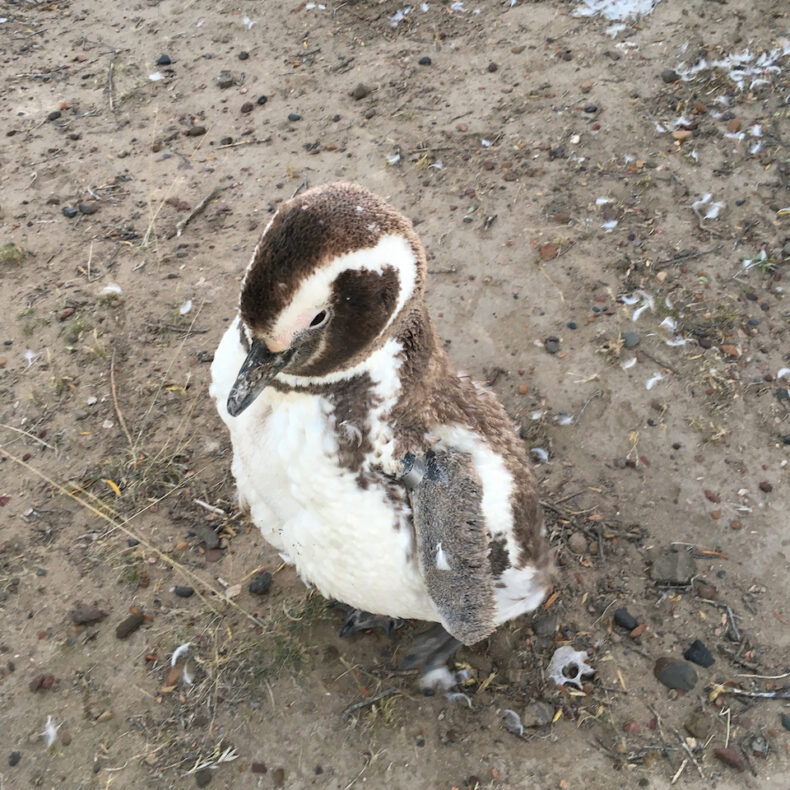
1/4 | 2/4 | 3/4 | 4/4
The next four stages can be combined. They describe how much of the new plumage is progressively visible on a penguin. Shedding and replacement begin in earnest. The old feathers are only loosely attached to the body. If I run my hand over a long-suffering penguin’s back, sheafs of feathers come right off. A penguin sneezes; dozens of feathers are set free. The air fills with them. They blow over the ground, gather in thick drifts under the bushes, festoon every branch in cottony tufts, dancing in the wind. Dry gullies overflow with flash floods of feathers.
The penguins, meanwhile, are at their most ridiculous. Their feathers are falling off in clumps and their new plumage isn’t quite in yet, so they seem moth-eaten, even slovenly. Some look like they’re wearing barrister’s wigs, or have grown out mutton chop whiskers, or both. Not to anthropomorphize overmuch—but these are penguins, what can you do?—sometimes I wonder if their appearance embarrasses them a little. They have no privacy, nowhere else to go, nothing to do but wait. Until they get their new plumage, they can’t enter the water for any significant amount of time without getting cold.
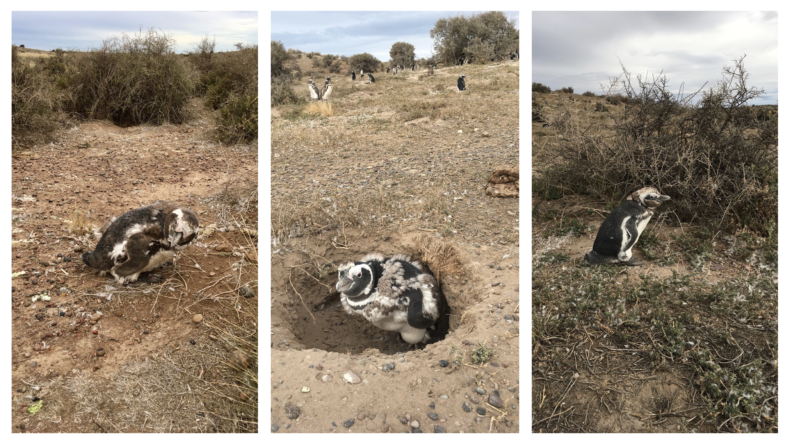
Not all the penguins look ridiculous. As the days pass, I become all too aware of how the penguins, standing still, not going anywhere, are in a desperate race against time. Some will lose. To go three weeks without food is a hard test, and a not insignificant percentage of them did not eat enough when they could. I see these tragic penguins on the beach, miserably thin, their flippers hanging limply at their sides, barely able to stand. They have just a few stubborn old feathers left, maybe about the neck, and their new feathers are almost all in—almost! But I can do the rough calculation of how long they have until their plumage is ready against how wasted their bodies are, and I know they are doomed. They seem to know, too. Usually within a day or so I find their bodies sprawled on the beach. Never within the colony. Called to the sea to the last, but unable to answer.
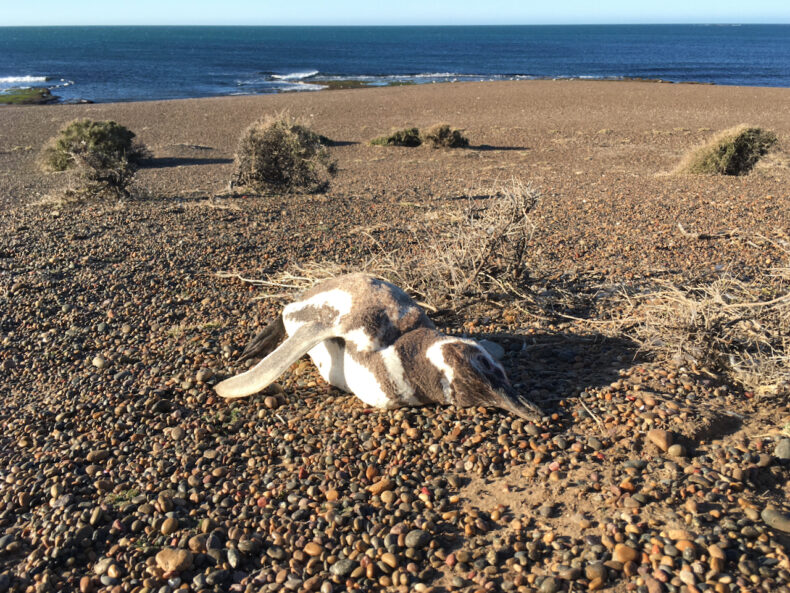
Fully Finished
Since I have seen how great the cost can be, I love it when penguins reach the last stage: Fully Finished. All their new feathers are in, and they are blacker than black, whiter than white: the epitome of a penguin. Now that they’re done they can leave if they want to. I go down to the beach to watch them, these brand new old penguins, when they toddle to the water’s edge. Their departures let me confront my own limits of imagination. As a biologist, I have tended to think of the end of a breeding season as precisely that: an ending. The important part of the penguin’s life, so far as we have been concerned, is over. But this way of thinking is too economic. A living animal is alive all the time. Every moment matters in an unending stream of being, whether we are watching or not. This isn’t an end for the penguins. It isn’t a beginning, either. They are simply carrying on.
Look at these penguins now—so beautiful, so hungry, so strong. The ocean rolls in; they stoop to drink from it. A wave then crashes over them and knocks them off their feet, and they tumble in the surf for a moment or two before righting themselves and bobbing to the surface, and then off they go, ready, I hope, for all their days to come.
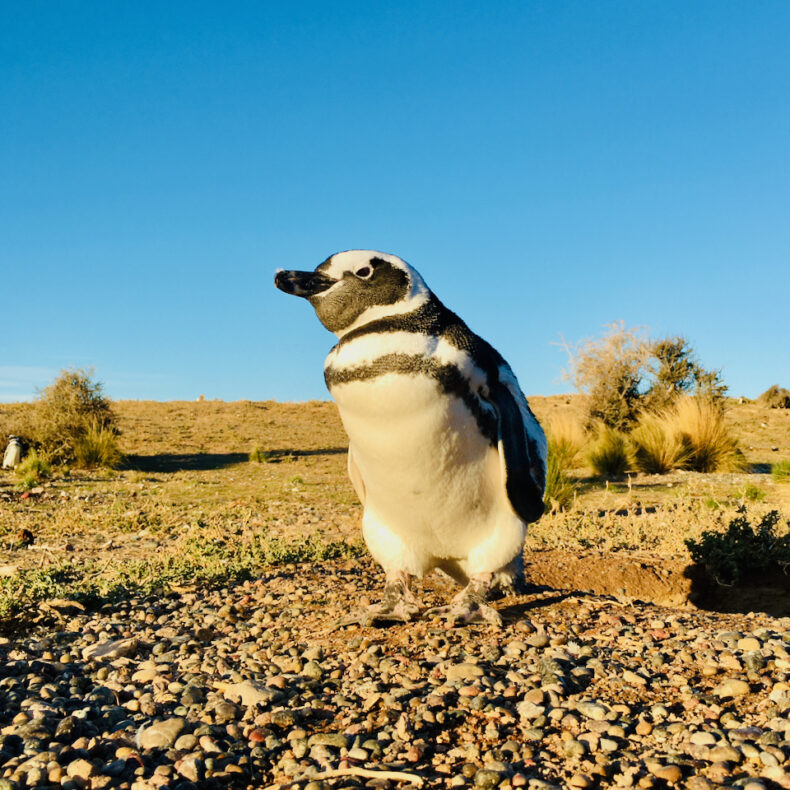
All photos by the author
The World is such an amazing place! If only we could—would—just let it be what it is. Seems it would get along just fine without our meddling… Thanks, Eric!
Thanks, Bill! Yes, I completely agree that the world is amazing.